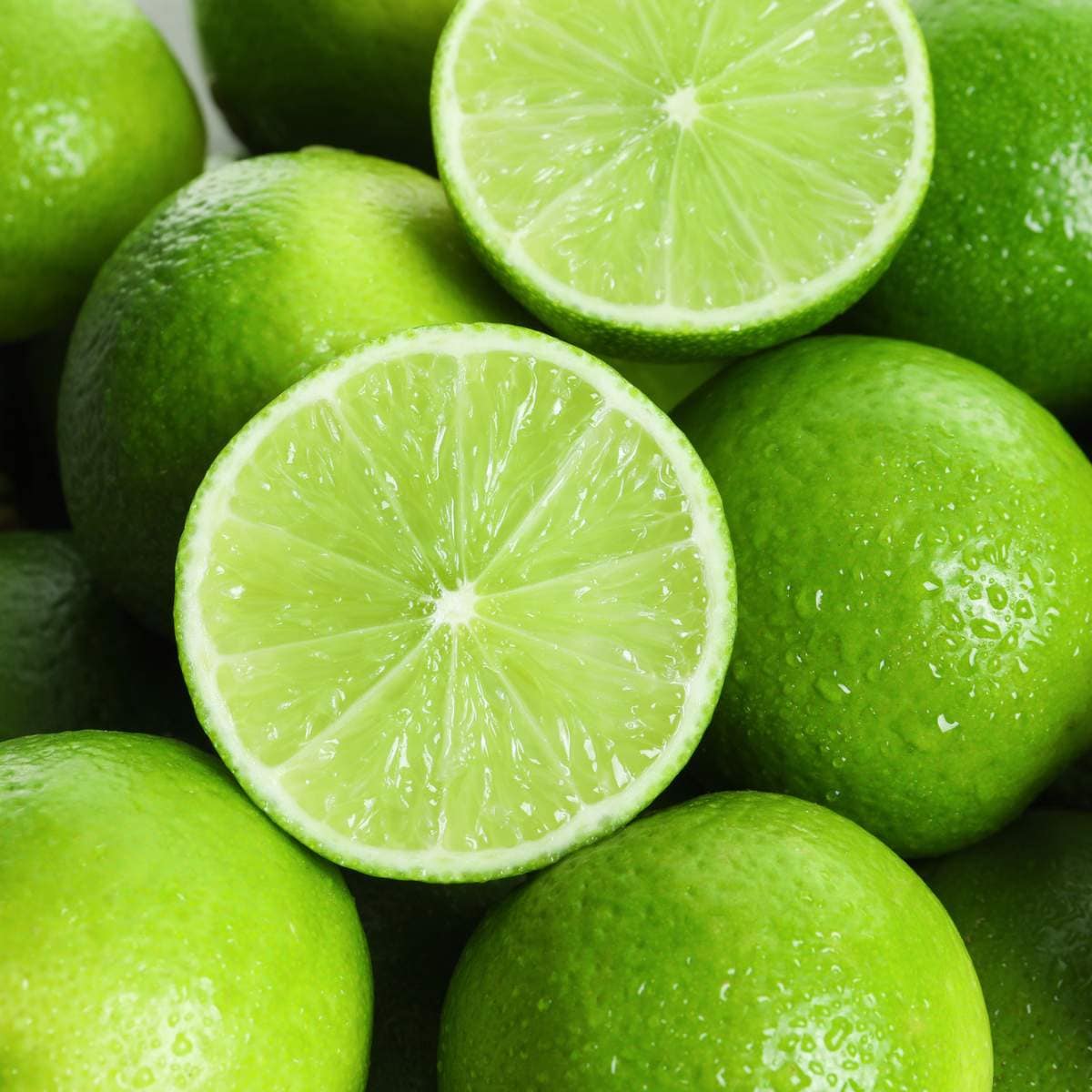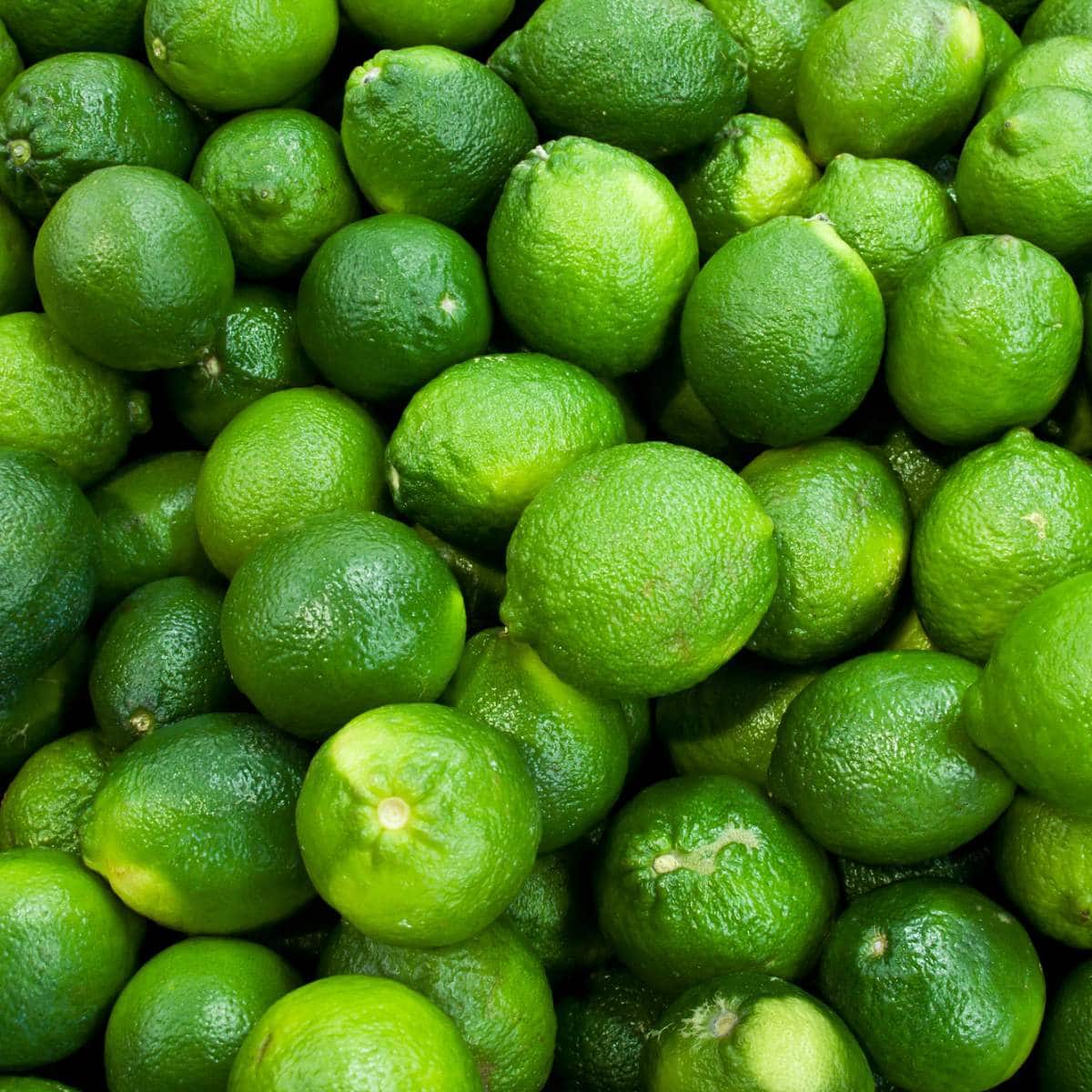Can You Freeze Limes?
Can you freeze limes? Let’s discover some essential tips for preserving their flavor and texture, ensuring you get the most out of your limes.

Limes offer a refreshing zest to a wide range of dishes and drinks, making them a kitchen staple for many.
Freezing limes is an efficient method to extend their shelf life while maintaining their tangy flavor and nutritional value. When done correctly, they can be preserved for use well beyond their typical expiration date.
The process for freezing limes is straightforward and accessible. Limes can be frozen whole, which can make them easier to zest later on. Alternatively, limes can be sliced, juiced, or zested before freezing, depending on how they are intended to be used later on.
You might worry that freezing could alter their taste or texture, but when handled properly, frozen limes can retain much of their original quality.
Given the convenience and effectiveness of freezing, it’s a viable option for those looking to keep limes on hand without the worry of them spoiling. Whether the intention is to use them for culinary purposes or to add a dash of citrus to beverages, freezing provides an excellent way to ensure a consistent supply of limes throughout the year!

Benefits of Freezing Limes
Freezing limes is a practical approach to maintain their vibrant flavor and nutritional value, while also vastly extending their shelf life beyond what the refrigerator can offer.
Preserving Flavor and Nutrients
Freezing limes helps in preserving their tangy flavor and vital nutrients effectively. By reducing spoilage and nutrient degradation, the limes maintain their citrus quality. This method ensures they are almost as good as using fresh limes when thawed properly.
Extending Shelf Life
Ordinarily, limes last about 1-2 weeks in the fridge before they start to deteriorate. When frozen, limes can retain their quality for up to 4-6 months. This extension allows for the enjoyment of lime’s tangy taste even when they are out of season or if there is an excess that would otherwise go to waste.
Usage in Drinks and Recipes
Frozen limes are versatile in usage and suitable for drinks, sauces, and desserts providing a refreshing taste and aromatic zest. They can also be used in baked goods, offering a concentrated lime flavor. Slices or zest can be added directly to recipes, while the juice can enhance many dishes without the need for defrosting.

Preparing Limes for Freezing
To ensure the best quality when freezing limes, careful preparation is crucial. This process involves selecting the freshest limes and cleaning them properly to avoid spoilage, then preparing them in a form suitable for long-term storage, such as whole, in slices, or zest.
Selecting and Cleaning Limes
When choosing limes to freeze, look for ripe ones with bright, firm skins, avoiding those with blemishes or soft spots that could indicate spoilage. It is essential to use a vegetable brush to clean limes thoroughly under running water to remove any dirt or bacteria. For smaller varieties like key limes, extra attention is needed as their size can make them more delicate to handle.
- Checklist for Selecting Limes:
- Bright, firm skin
- No blemishes or soft spots
- Heavier limes suggest juiciness
- Cleaning Process:
- Use a vegetable brush
- Rinse under running water
- Pat dry before further processing
Slicing and Zesting
Freezing limes whole may take up more space, so many prefer to either freeze lime slices or freeze lime zest. Slicing limes is straightforward; cut them into uniform slices, remove any seeds, and spread the slices out on a baking sheet to freeze individually before transferring them to a container. This prevents the slices from sticking together. Zesting limes should be done with a zester or grater, collecting the lime zest on a flat surface and then spreading it thin to freeze in the same manner.
- Instructions for Slicing:
- Slice limes uniformly
- Remove seeds
- Freeze on a baking sheet before storing
- Instructions for Zesting:
- Use a zester or grater
- Collect zest and spread thinly to freeze
- Store in an airtight container after freezing
By following these steps, limes will retain their flavor and freshness for future use in cooking and beverage preparation.
Freezing Techniques
When preserving limes through freezing, you can employ various techniques to ensure they retain as much flavor and texture as possible. These methods also cater to different uses of limes, whether that’s using them as wedges for garnishing or adding zest and juice to recipes.
Whole Limes
To freeze whole limes, it’s best to first wash and dry them thoroughly to remove any pesticides or dirt. One can then place the limes individually or in an airtight container to prevent freezer burn. This method preserves the texture best for later use, and the limes can be thawed as needed for juicing or recipes requiring fresh limes.
Lime Juice and Zest
For those looking to freeze lime juice, squeezing the juice out with a juicer and pouring it into an ice cube tray is an efficient technique. Once the juice has frozen, transfer the cubes into a freezer bag, making sure to label the bag with the date. The zest can be frozen separately by finely grating it and storing it in an airtight container. Flash-freezing the zest on a baking sheet before transferring it to a storage container can help maintain its potency.
Slices and Wedges
Freezing lime slices and wedges has a straightforward approach. First, slice the limes and then lay the pieces out on a baking sheet. Place the sheet in the freezer for a few hours for a flash freeze. Once solid, the pieces can be transferred to an airtight container or freezer bag. This prevents the pieces from clumping together, making it easier to take out only what is needed. Remember to label the container or bag. While the texture of thawed lime pieces isn’t ideal for fresh consumption, they’re perfect for adding to drinks or cooking.

Thawing and Using Frozen Limes
When using frozen limes, it’s crucial to handle the thawing process properly to maintain flavor and usability. The defrosting technique can vary depending on how the limes will be used, whether it’s for cooking or adding a citrus twist to beverages.
Defrosting Guidelines
To defrost frozen limes, place them in the refrigerator for several hours or overnight. This gradual thawing method helps preserve the limes’ texture. However, if one is in a hurry, limes can be left at room temperature for a faster thaw. It’s important to note that once limes have been thawed, they should not be refrozen, as this can greatly affect their quality and flavor.
For lime slices and wedges specifically, defrosting can be achieved by simply removing the desired amount from the freezer and allowing it to thaw for a few hours in the fridge. Using warm water to expedite the process should be avoided as it can make the texture mushy.
Cooking and Cocktail Tips
Once limes are defrosted, they’re versatile for culinary use. Although the texture may be softer after freezing, the flavor remains intact, making them suitable for marinades, dressings, and lime-centric dishes. In cocktails and mocktails, frozen lime slices can be used directly without defrosting to chill and subtly flavor drinks.
Frozen limes are especially convenient because the freezing method preserves their acidity and zesty taste. One can simply squeeze the juice from thawed limes to use in recipes. While frozen limes might not be the best choice for garnishes due to texture changes, they still perform excellently in the realm of cooking and mixology.
Frequently Asked Questions
What is the optimal method for freezing limes to retain their flavor and texture?
For the best retention of flavor and texture, limes should be thoroughly washed before freezing. One can freeze limes whole, sliced, juiced, or zested, as each form fares well in the freezer if prepared correctly.
How long do limes remain usable when stored in a freezer?
When properly stored in a freezer, limes can last for up to 6 to 12 months. To maintain their best quality over time, it is critical to store them in airtight containers or freezer bags to prevent freezer burn and dehydration.
What are the steps to properly thaw frozen limes?
To thaw frozen limes, one can transfer them to the refrigerator and let them defrost overnight. For a quicker option, leaving them at room temperature on the counter is also effective.
Are there specific techniques for freezing limes intended for beverage use?
Freezing lime slices or wedges is practical for use in beverages. Freeze them on a baking sheet before transferring them to storage containers. This method keeps slices separate and ready for direct use in drinks.
Is there a difference in quality when freezing whole limes versus sliced ones?
Whole limes retain more of their original moisture content when frozen, whereas sliced limes can become slightly drier. Both methods are viable, but whole limes may have a slight edge in maintaining juiciness.
What creative uses are there for limes that have been frozen?
Frozen limes can be used creatively in a variety of ways including grinding them into lime powder for seasoning dishes, integrating them into sorbets, or simply using them as a cooling garnish in culinary creations or beverages.

